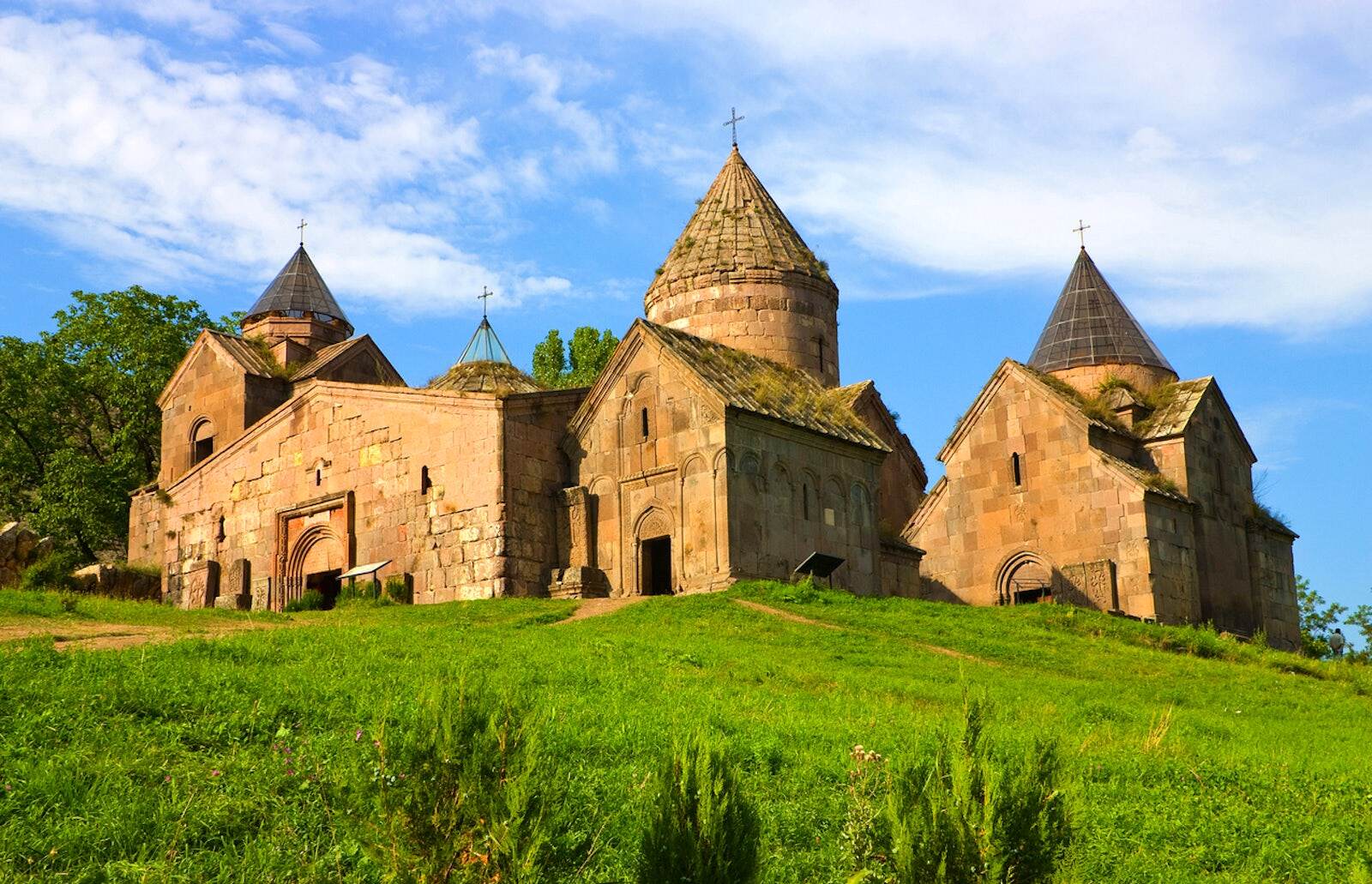
Goshavank Monastery is a remarkable landmark nestled in the beautiful landscapes of Armenia. Located in the Tavush Province, this ancient monastery holds a rich history and a sense of grandeur that captivates the imagination of all who visit.
With its stunning architectural design, intricate stone carvings, and magnificent religious artifacts, Goshavank Monastery is not only a spiritual center but also a historical treasure trove. It serves as a testament to the country’s rich cultural heritage and reflects the deep faith of its people.
In this article, we will delve into 17 astonishing facts about Goshavank Monastery. From its origins and architectural features to its notable cultural significance, we will explore the fascinating aspects that make this landmark truly unique and worthy of exploration. So, let’s embark on a journey to discover the enchanting wonders of Goshavank Monastery.
Key Takeaways:
- Goshavank Monastery, founded in the 12th century, is a UNESCO World Heritage Site with stunning architecture, ancient manuscripts, and healing holy water, making it a must-visit for history enthusiasts and nature lovers alike.
- The monastery’s unique acoustic qualities and tranquil location in Dilijan National Park offer a serene experience, while its cultural significance as a center for Armenian arts and literature makes it a fascinating destination for spiritual and historical exploration.
Magnificent Architecture
Goshavank Monastery boasts stunning medieval Armenian architectural design, featuring intricate stone carvings and ornate decorations.
Beautiful Location
Situated amidst picturesque landscapes, the monastery is nestled in the heart of the Dilijan National Park, offering breathtaking views of nature.
Founded in the 12th Century
The monastery was founded in 1188 by the notable Armenian scholar, theologian, and philosopher Mkhitar Gosh.
Named After Its Founder
Goshavank Monastery derives its name from Mkhitar Gosh, who dedicated the monastery to his beloved teacher, Hovhannes Vorotnetsi.
Home to the Oldest Khachkar
Within the monastery complex lies the oldest khachkar (cross-stone) in Armenia, dating back to 1291.
UNESCO World Heritage Site
In recognition of its cultural and historical significance, Goshavank Monastery was inscribed as a UNESCO World Heritage Site in 2000.
Impressive Cross-Stone Collection
Goshavank houses an impressive collection of intricately carved khachkars, showcasing the artistry and craftsmanship of medieval Armenia.
Unique Acoustic Qualities
One of the intriguing features of the monastery is its unique acoustic qualities, where even a whisper can be heard throughout the complex.
Monument to Armenian Literature
Mkhitar Gosh established a scriptorium at Goshavank, where numerous manuscripts were produced, contributing to the preservation of Armenian literature.
Historical Manuscript Collection
The monastery’s library houses a vast collection of ancient manuscripts, including religious texts, historical documents, and literary works.
Architectural Symbolism
The architectural elements of Goshavank Monastery symbolize various aspects of the Armenian Apostolic Church and its rich theological heritage.
Home to Religious Relics
Within the monastery complex, you can find precious relics, including fragments of the Holy Cross and the relics of Saint John the Baptist.
Healing Properties of Holy Water
According to local belief, the holy water found within the monastery has healing properties and is said to have cured many ailments throughout history.
Cultural Center
Goshavank Monastery serves as a cultural center, hosting various events, exhibitions, and performances that showcase Armenian arts and traditions.
Spiritual Pilgrimage Site
Many pilgrims visit Goshavank Monastery every year to seek spiritual solace, meditate, and pay homage to the relics and religious artifacts.
Preservation Efforts
The ongoing conservation and restoration efforts by experts ensure that Goshavank Monastery remains intact for future generations to appreciate and admire.
Tranquility and Serenity
Visiting Goshavank Monastery provides a sense of tranquility and serenity, allowing visitors to connect with nature and reflect on the rich history of Armenia.
With its rich historical and cultural significance, Goshavank Monastery stands as a testament to Armenia’s enduring heritage. A visit to this astonishing site is a journey through time and a glimpse into the majestic beauty of the country.
Conclusion
In conclusion, Goshavank Monastery stands as a testament to the rich history and cultural significance of Armenia. With its stunning architecture, intricate carvings, and captivating legends, it continues to attract visitors from around the world. From its founding by Mkhitar Gosh to its restoration efforts and status as a UNESCO World Heritage Site, Goshavank Monastery holds a special place in the hearts of Armenians and history enthusiasts alike. Whether you are a devout believer, an architecture aficionado, or simply someone who appreciates the beauty of ancient landmarks, a visit to Goshavank Monastery is sure to leave you awe-inspired.
FAQs
1. When was Goshavank Monastery established?
Goshavank Monastery was established in the 12th century, specifically in the year 1188.
2. Who was responsible for the founding of Goshavank Monastery?
The monastery was founded by Armenian scholar and cleric Mkhitar Gosh.
3. What is the significance of the name “Goshavank”?
The name “Goshavank” is derived from the name of its founder, Mkhitar Gosh.
4. Is Goshavank Monastery still active as a religious site?
No, Goshavank Monastery is no longer an active religious site. However, it still holds immense cultural and historical significance.
5. Is Goshavank Monastery open to visitors?
Yes, Goshavank Monastery is open to visitors throughout the year. Tourists can explore its architectural marvels and learn about its intriguing history.
6. Is there an entrance fee to visit Goshavank Monastery?
Yes, there might be an entrance fee to visit Goshavank Monastery. The fee helps with the preservation and maintenance of the site.
7. Can you climb the bell tower of Goshavank Monastery?
No, climbing the bell tower is not allowed for safety reasons. However, you can admire its beauty from the ground.
8. Are there any restaurants or cafes near Goshavank Monastery?
Yes, there are a few restaurants and cafes nearby where visitors can enjoy a meal or refreshments after exploring the monastery.
9. Are there any accommodations available near Goshavank Monastery?
Yes, there are several guesthouses and hotels in the nearby town of Dilijan where visitors can stay during their visit to Goshavank Monastery.
10. Can I take photographs inside Goshavank Monastery?
Yes, photography is allowed inside Goshavank Monastery. Capture the beauty of the architecture and the stunning surroundings as you explore the site.
Goshavank Monastery's captivating history and spiritual significance make it a must-visit destination for those seeking to explore Armenia's rich cultural heritage. If you're interested in learning more about the Christian heritage that has shaped the world, be sure to check out our article on 20 fascinating Epiphany facts.
Was this page helpful?
Our commitment to delivering trustworthy and engaging content is at the heart of what we do. Each fact on our site is contributed by real users like you, bringing a wealth of diverse insights and information. To ensure the highest standards of accuracy and reliability, our dedicated editors meticulously review each submission. This process guarantees that the facts we share are not only fascinating but also credible. Trust in our commitment to quality and authenticity as you explore and learn with us.


